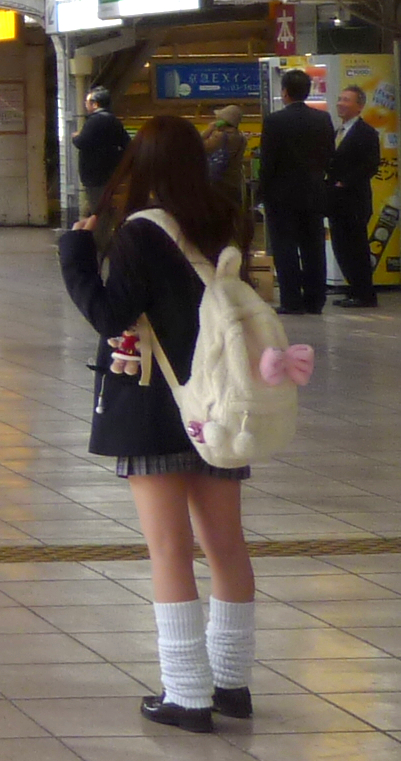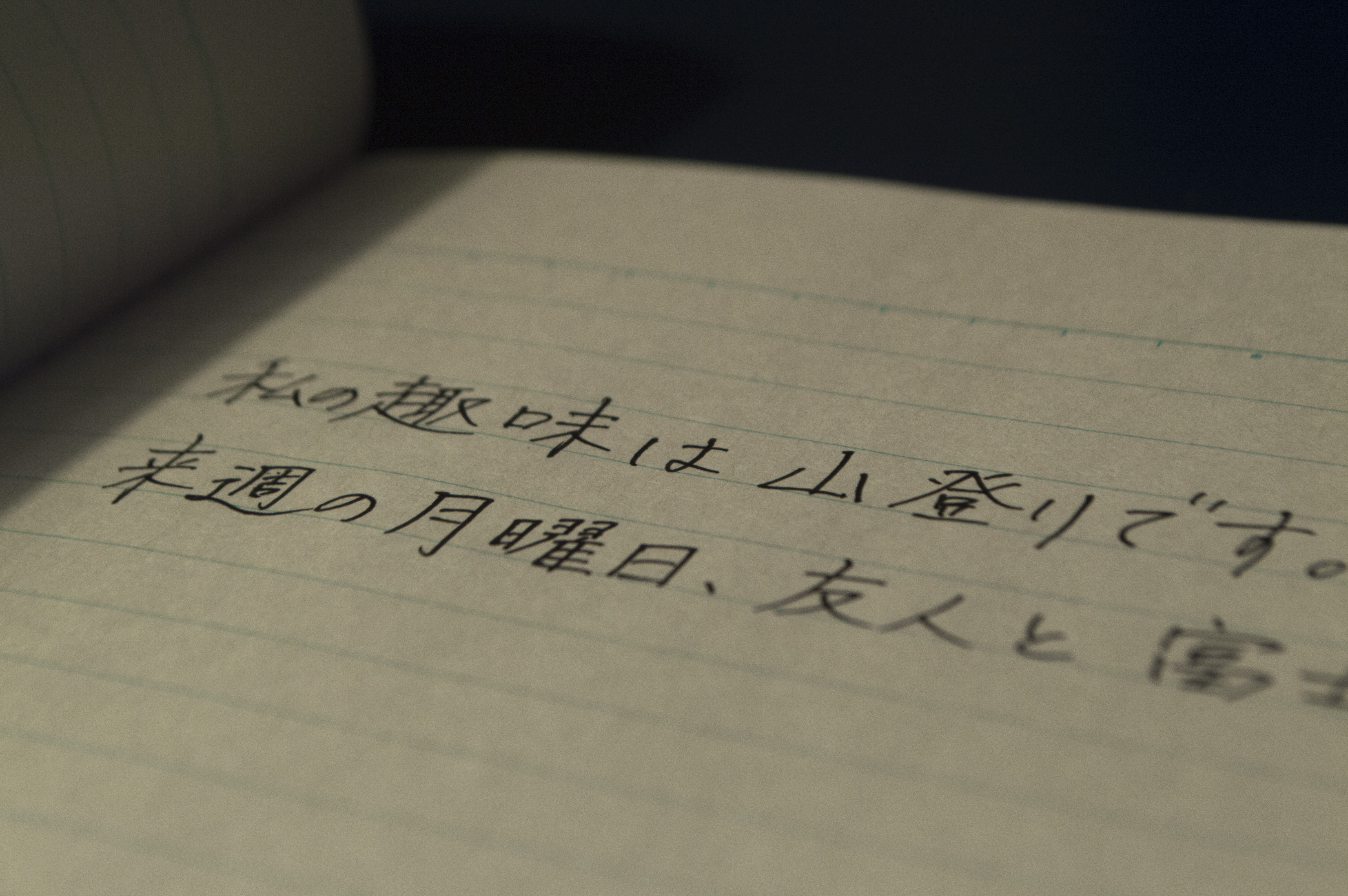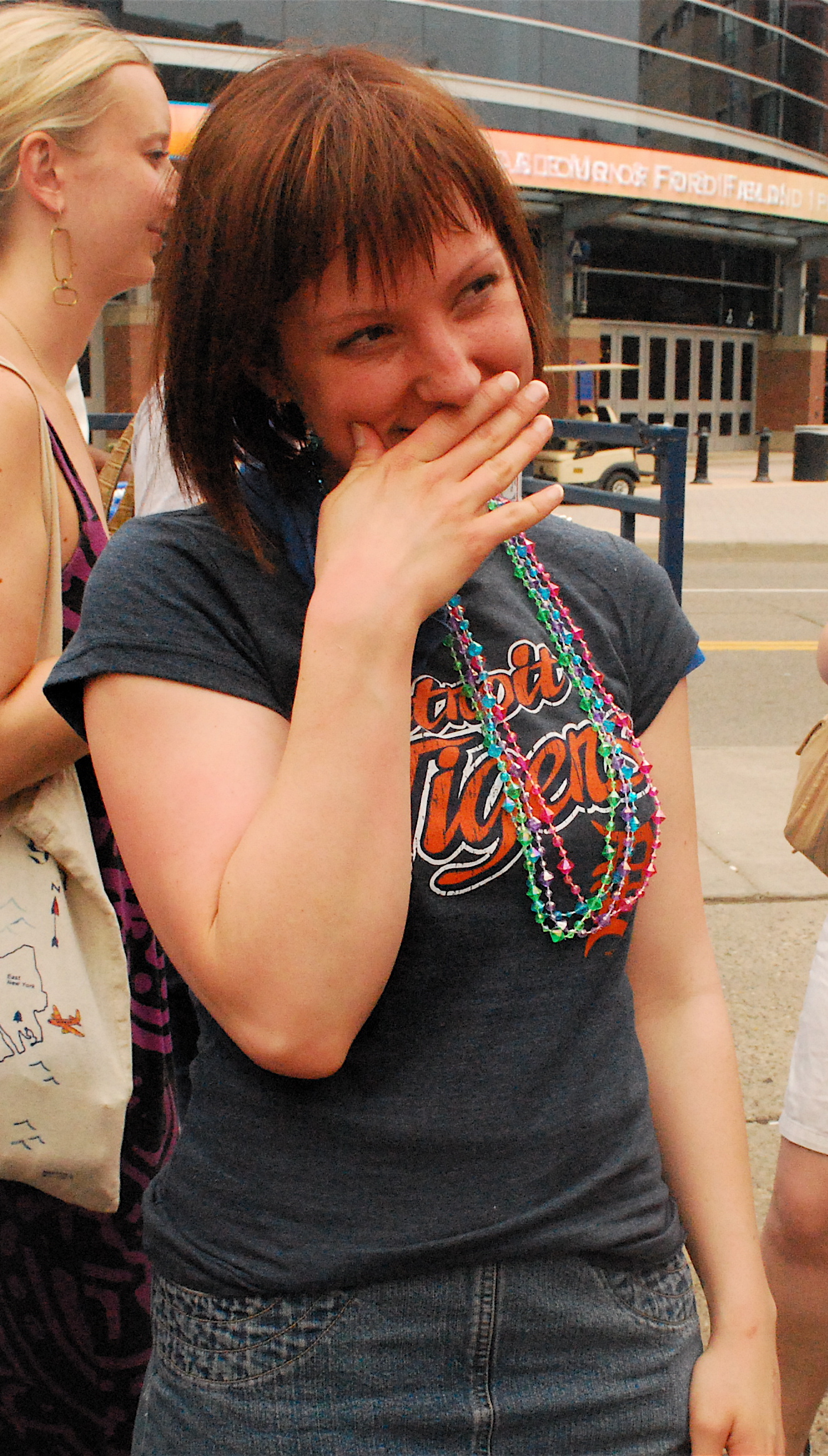|
Kawaisa
''Kawaii'' is the culture of cuteness in Japan. It can refer to items, humans and non-humans that are charming, vulnerable, shy and childlike.Kerr, Hui-Ying (23 November 2016)"What is kawaii – and why did the world fall for the ‘cult of cute’?", ''The Conversation''. Examples include cute handwriting, certain genres of manga, anime, and characters including Hello Kitty and Pikachu. The cuteness culture, or ''kawaii'' aesthetic, has become a prominent aspect of Japanese popular culture, entertainment, clothing, food, toys, personal appearance, and mannerisms. Etymology The word ''kawaii'' originally derives from the phrase ''kao hayushi'', which literally means "(one's) face (is) aglow," commonly used to refer to flushing or blushing of the face. The second morpheme is cognate with ''-bayu'' in '' mabayui'' (眩い, 目映い, or 目映ゆい) "dazzling, glaring, blinding, too bright; dazzlingly beautiful" (''ma-'' is from ''me'' "eye") and ''-hayu'' in ''omohayui ... [...More Info...] [...Related Items...] OR: [Wikipedia] [Google] [Baidu] |
Ateji
In modern Japanese, principally refers to kanji used to phonetically represent native or borrowed words with less regard to the underlying meaning of the characters. This is similar to in Old Japanese. Conversely, also refers to kanji used semantically without regard to the readings. For example, the word "sushi" is often written with its . Though the two characters have the readings and respectively, the character means "one's natural life span" and means "to administer", neither of which has anything to do with the food. as a means of representing loanwords has been largely superseded in modern Japanese by the use of (see also Transcription into Japanese), although many coined in earlier eras still linger on. Usage today are used conventionally for certain words, such as ('sushi'), though these words may be written in hiragana (especially for native words), or katakana (especially for borrowed words), with preference depending on the particular word, context, a ... [...More Info...] [...Related Items...] OR: [Wikipedia] [Google] [Baidu] |
Comics
a medium used to express ideas with images, often combined with text or other visual information. It typically the form of a sequence of panels of images. Textual devices such as speech balloons, captions, and onomatopoeia can indicate dialogue, narration, sound effects, or other information. There is no consensus amongst theorists and historians on a definition of comics; some emphasize the combination of images and text, some sequentiality or other image relations, and others historical aspects such as mass reproduction or the use of recurring characters. Cartooning and other forms of illustration are the most common image-making means in comics; '' fumetti'' is a form that uses photographic images. Common forms include comic strips, editorial and gag cartoons, and comic books. Since the late 20th century, bound volumes such as graphic novels, comic albums, and ' have become increasingly common, while online webcomics have proliferated in the 21st century. The histo ... [...More Info...] [...Related Items...] OR: [Wikipedia] [Google] [Baidu] |
Magazines
A magazine is a periodical publication, generally published on a regular schedule (often weekly or monthly), containing a variety of content. They are generally financed by advertising, purchase price, prepaid subscriptions, or by a combination of the three. Definition In the technical sense a '' journal'' has continuous pagination throughout a volume. Thus ''Business Week'', which starts each issue anew with page one, is a magazine, but the '' Journal of Business Communication'', which continues the same sequence of pagination throughout the coterminous year, is a journal. Some professional or trade publications are also peer-reviewed, for example the '' Journal of Accountancy''. Non-peer-reviewed academic or professional publications are generally ''professional magazines''. That a publication calls itself a ''journal'' does not make it a journal in the technical sense; ''The Wall Street Journal'' is actually a newspaper. Etymology The word "magazine" derives from Arabic , t ... [...More Info...] [...Related Items...] OR: [Wikipedia] [Google] [Baidu] |
Japanese Writing
The modern Japanese writing system uses a combination of logographic kanji, which are adopted Chinese characters, and syllabic kana. Kana itself consists of a pair of syllabaries: hiragana, used primarily for native or naturalised Japanese words and grammatical elements; and katakana, used primarily for foreign words and names, loanwords, onomatopoeia, scientific names, and sometimes for emphasis. Almost all written Japanese sentences contain a mixture of kanji and kana. Because of this mixture of scripts, in addition to a large inventory of kanji characters, the Japanese writing system is considered to be one of the most complicated currently in use. Several thousand kanji characters are in regular use, which mostly originate from traditional Chinese characters. Others made in Japan are referred to as “Japanese kanji” ( ja, 和製漢字, wasei kanji, label=none; also known as “country’s kanji” ja, 国字, kokuji, label=none). Each character has an intrinsic meaning ... [...More Info...] [...Related Items...] OR: [Wikipedia] [Google] [Baidu] |
Mechanical Pencil
A mechanical pencil, also clutch pencil, is a pencil with a replaceable and mechanically extendable solid pigment core called a "lead" . The lead, often made of graphite, is not bonded to the outer casing, and can be mechanically extended as its point is worn away as it is being used. Other names include: microtip pencil, automatic pencil, drafting pencil, technical pencil, click pencil (generally refers to a specific brand), pump pencil, leadholder, Pacer (Australian English, ca. the 1980s), propelling pencil (British and Australian English, often refers to higher-end mechanical pencils), pen pencil (Indian English), and lead pencil (Bangladeshi and American English). Mechanical pencils are used to provide lines of constant width, without need of sharpening, for tasks such as technical drawing as well as for clean looking writing. They are also used for fine-art drawing. Since they do not have to be sharpened, they are also popular with students. Mechanical pencils were first u ... [...More Info...] [...Related Items...] OR: [Wikipedia] [Google] [Baidu] |
Aesthetics
Aesthetics, or esthetics, is a branch of philosophy that deals with the nature of beauty and taste, as well as the philosophy of art (its own area of philosophy that comes out of aesthetics). It examines aesthetic values, often expressed through judgments of taste. Aesthetics covers both natural and artificial sources of experiences and how we form a judgment about those sources. It considers what happens in our minds when we engage with objects or environments such as viewing visual art, listening to music, reading poetry, experiencing a play, watching a fashion show, movie, sports or even exploring various aspects of nature. The philosophy of art specifically studies how artists imagine, create, and perform works of art, as well as how people use, enjoy, and criticize art. Aesthetics considers why people like some works of art and not others, as well as how art can affect moods or even our beliefs. Both aesthetics and the philosophy of art try to find answers for what exact ... [...More Info...] [...Related Items...] OR: [Wikipedia] [Google] [Baidu] |
Blushing
Blushing is the reddening of a person's face due to psychological reasons. It is normally involuntary and triggered by emotional stress associated with passion, embarrassment, shyness, fear, anger, or romantic stimulation. Severe blushing is common in people who have social anxiety in which the person experiences extreme and persistent anxiety in social and performance situations. Summary Blushing is generally distinguished, despite a close physiological relation, from flushing, which is more intensive and extends over more of the body, and seldom has a mental source. If redness persists for abnormal amounts of time after blushing, then it may be considered an early sign of rosacea. Idiopathic craniofacial erythema is a medical condition where a person blushes strongly with little or no provocation. Just about any situation can bring on intense blushing and it may take one or two minutes for the blush to disappear. Severe blushing can make it difficult for the person to feel ... [...More Info...] [...Related Items...] OR: [Wikipedia] [Google] [Baidu] |
Shogunate
, officially , was the title of the military dictators of Japan during most of the period spanning from 1185 to 1868. Nominally appointed by the Emperor, shoguns were usually the de facto rulers of the country, though during part of the Kamakura period, shoguns were themselves figureheads, with real power in hands of the Shikken of the Hōjō clan. The office of shogun was in practice hereditary, though over the course of the history of Japan several different clans held the position. The title was originally held by military commanders during Heian period in the eighth and ninth centuries. When Minamoto no Yoritomo gained political ascendency over Japan in 1185, the title was revived to regularize his position, making him the first shogun in the usually understood sense. The shogun's officials were collectively referred to as the ; they were the ones who carried out the actual duties of administration, while the Imperial court retained only nominal authority.Beasley, William G ... [...More Info...] [...Related Items...] OR: [Wikipedia] [Google] [Baidu] |

.jpg)




